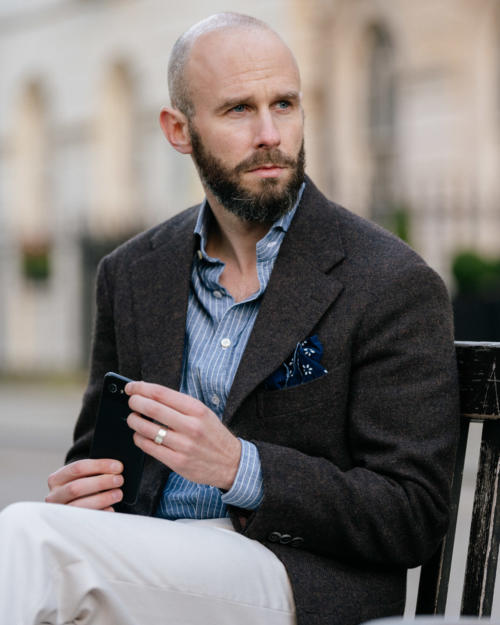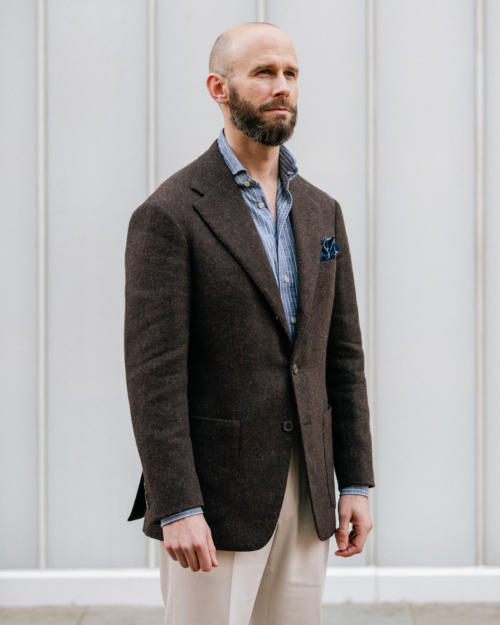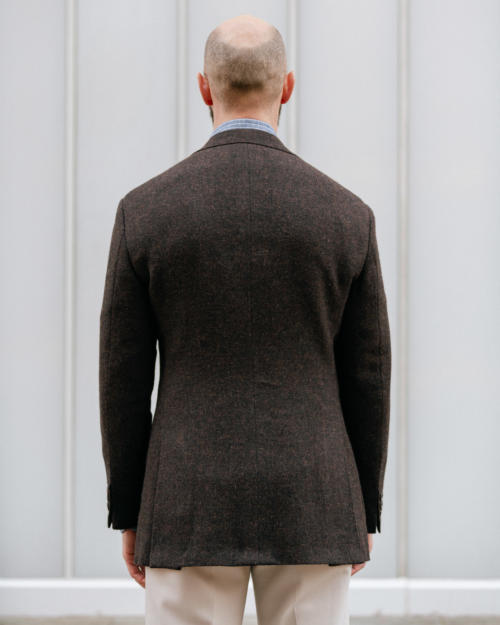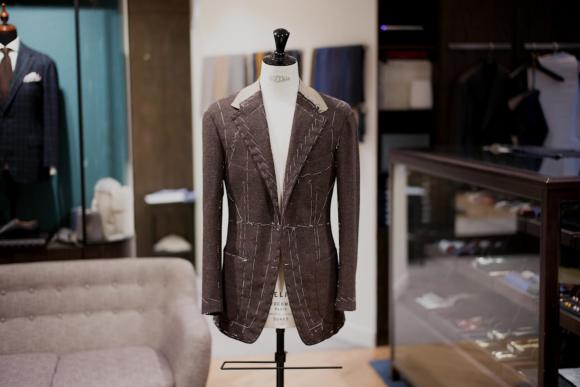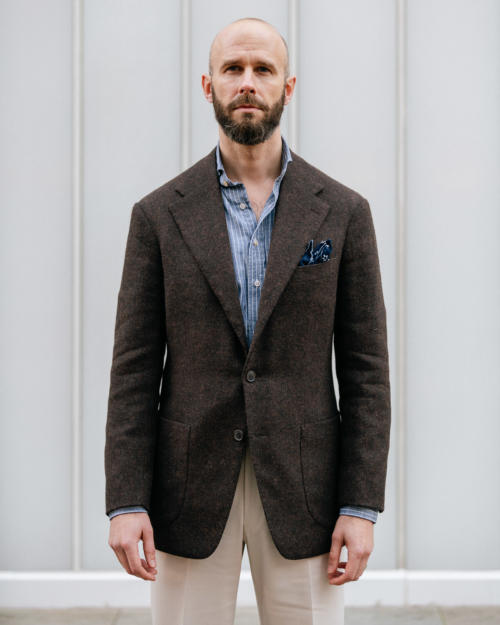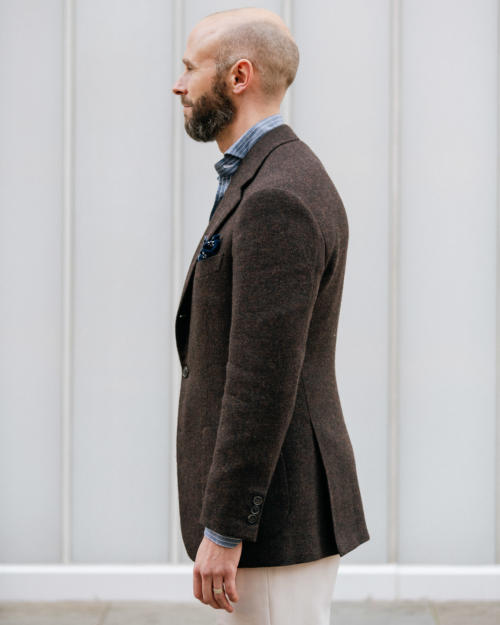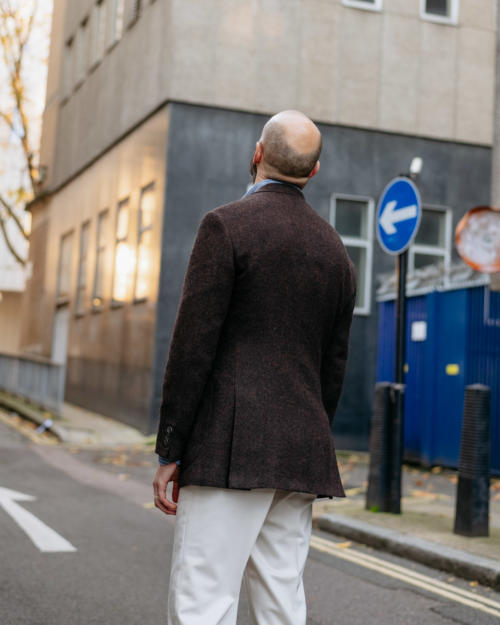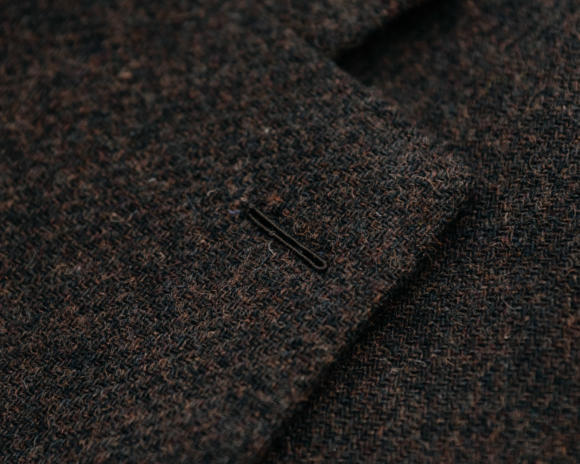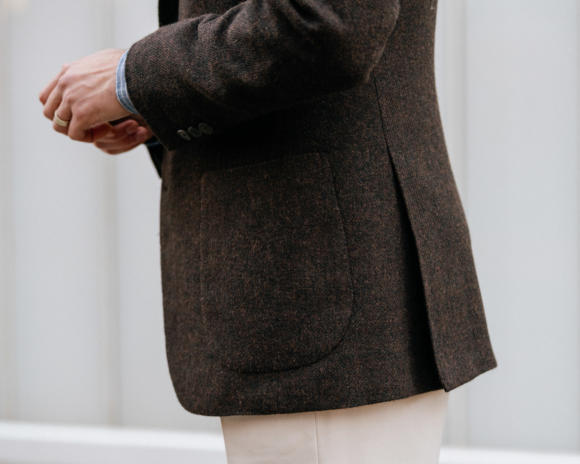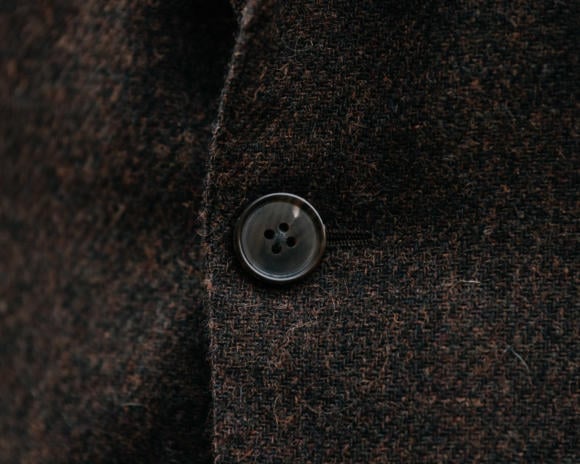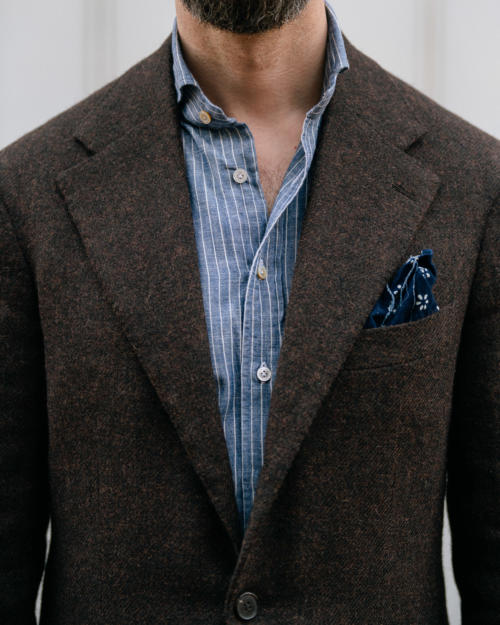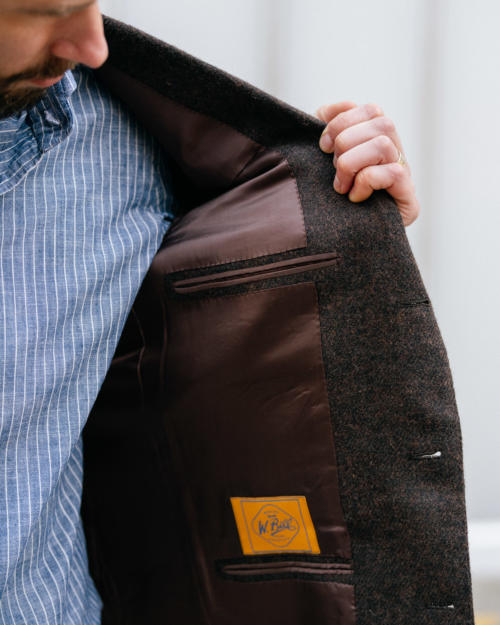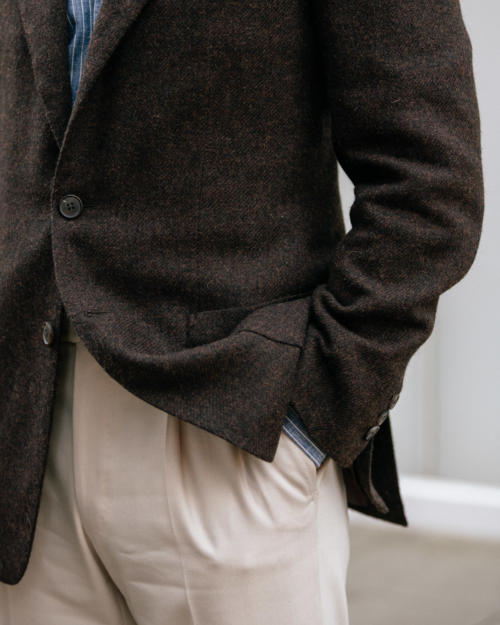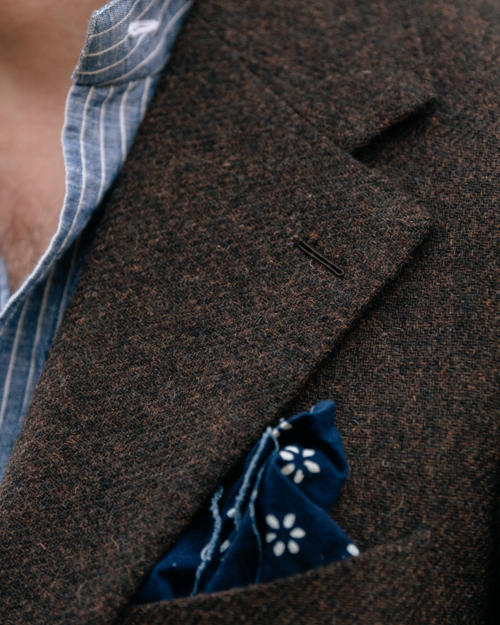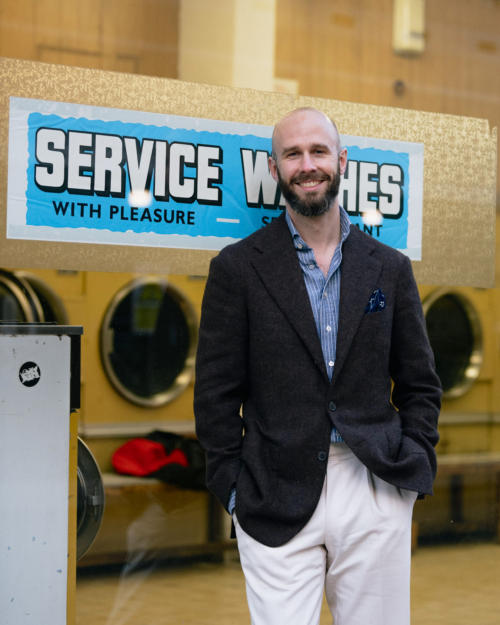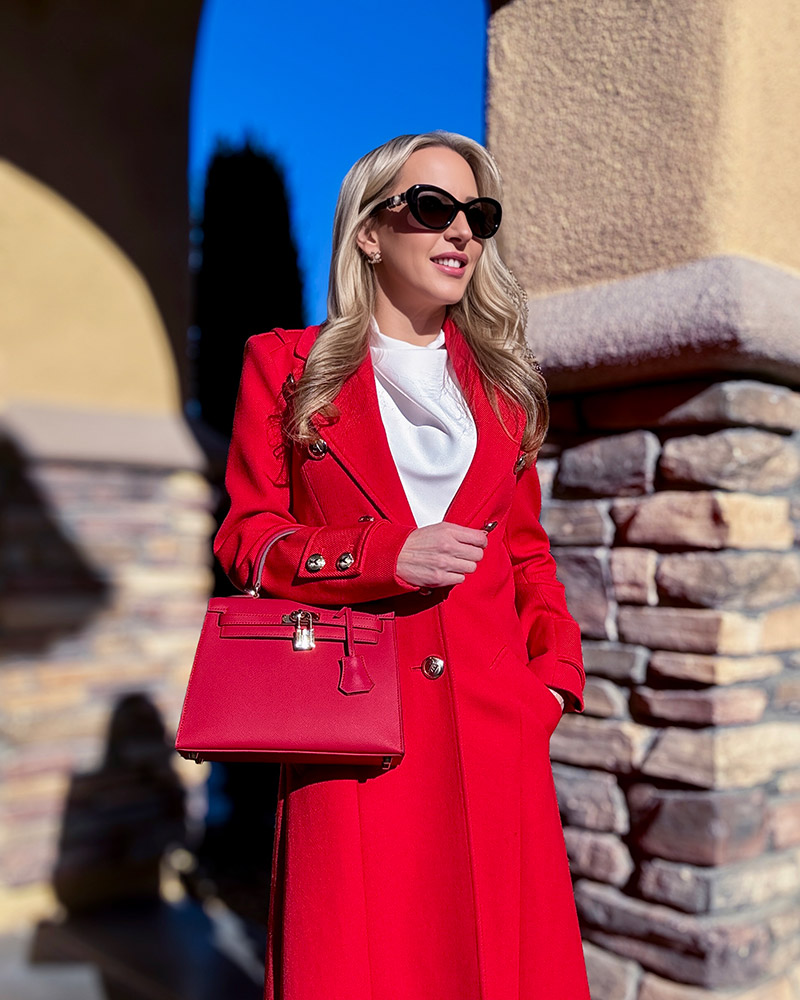
Sometimes a jacket really impresses you from the off – the try-on, the fitting, everything just beautifully done from the start.
It doesn’t happen very often, and it doesn’t necessarily make a difference to the finished garment; but it’s a very good, very reassuring sign.
This jacket, made by WW Chan, was one of those.
I’ll get into the details of the review in a moment, but just to say I’ll also spend some time talking about WW Chan and their journey. Because they’ve really evolved in recent years, in terms of style and structure, in a time when most other tailors haven’t.
I’ve known WW Chan for a long time, ever since I used to travel to Hong Kong with my old job. But it wasn’t until 2018 that I really spent time in the workshop there, with Patrick (Chu), Arnold (Wong) and the team.
When I did, I was impressed at their attention to detail and their open-mindedness. They were more aware than most tailors of other traditions around the world – and how those were affecting what their customers wanted.
Still, I was a little unsure about the style that resulted. It seemed a little early stage and I wasn’t sure it was for me.
That changed when WW Chan joined our pop-up shop on Savile Row, as part of the Bryceland’s residency. I tried on a jacket made for Kenji Cheung (of Bryceland’s), and loved the cut: wider in the shoulder, a little drape in the chest, straight but open in the foreparts.
It wasn’t a lightbulb moment, perhaps more of a click, a checkbox confidently ticked. I could see how I would wear this style and why I would like it.
(More evidence for what I’m always banging on about: that all tailors need try-on garments showing their style(s). It means the customer has a clear idea of what they’re buying, and their expectations are much more likely to be met.)
There was a reason I liked that WW Chan jacket so much, I think, and that’s that Kenji and Ethan had been working on it for years.
Every time he made something for Kenji, Patrick would tweak it based on their feedback: a little more roping in the shoulder, perhaps, or a slightly longer jacket. It’s a testament to the value of having customers with taste – something that has arguably influenced tailoring over the years more than the style of the cutters themselves.
Ethan also points out that Patrick at WW Chan is relatively young compared to other head tailors in Hong Kong – and is actually into his clothes, which isn’t the case with many tailors.
Still, I did end up changing some aspects of the style during the commissioning process. We removed the roping to achieve a more natural shoulder line, and used a curved or ‘barchetta’ breast-pocket shape, rather than the straight one on Bryceland’s tailoring.
I’m happy to do that, once the fundamentals of a style I like are in place. What’s much harder is making a dozen such changes, chasing some theoretical image in your head.
So, Patrick took measurements from me during that pop-up in London. We had a fitting during WW Chan’s regular trunk show here (they normally come twice a year) and then one more this past Autumn, when travel was no longer possible.
This was my first experience of bespoke done remotely, but I’m not sure it’s that representative, as the initial consultation had been done in person and the first fitting was extremely good: pretty much perfect balance, shape and line. There was little to tweak apart from the style details.
That meant that when we did the second fitting over Zoom, there were only small tweaks like the length of a sleeve, and adjusting the drape in the back.
One thing I am definitely learning from remote fittings (shoes and suits) is that the big problem is often quantifying changes. It’s easy to see that the waist needs taking out, or there’s too much space in the arch of a shoe. The hard thing is for the craftsman to see how much that needs to change, or for the customer to communicate it.
The final jacket fulfilled all my expectations. It was a lovely, clean fit, with natural shoulders and nice 3-roll-2 in the front. In fact, I think my slightly messy collar and handkerchief here belie how neat that make is.
There is no padding in the shoulder, just body canvas, and the chest has three layers, but light ones: a wool/camel hair layer all the way down the jacket, horsehair to just below the armhole, and then cotton canvas on top of that.
WW Chan have been on a journey with this structure as much as their cut. Their traditional structure, originating with the ‘Red Gang’ of tailors in Shanghai, came from the British, and so had heavier layers, horsehair down below the first button position, and felt over the top of that.
In the past decade they’ve replaced the felt with cotton and shortened the length of the last two. They still offer three different levels of structure though, depending on what the customer wants (and the intended formality of the piece).
The same goes for the shoulder expression too: it can be padded with different degrees of roping; unpadded with a flat, natural sleevehead (mine); or a Neapolitan ‘spalla camicia’ construction.
I really like that shoulder expression on mine, although I think it’s borderline whether it and the cut mean the jacket can work with jeans and casual chinos.
The spalla camicia expression might help there, but I also think it’s telling that Ethan and Kenji use the style more for suits than casual jackets, for example. Tailored trousers will be safer, and that’s what I’ll wear it with.
The jacket has a relatively low buttoning point: 18¾ inches from the neck point, which Arnold says is ⅜ of an inch lower than their standard. The pockets have been rounded more, to fit with the natural style overall. The Milanese buttonhole in the lapel is now a standard feature.
If I was going to see Patrick and the team soon, I might look at whether the sleeve could be wider. I wouldn’t say it was slim, but I do prefer a more generous sleeve these days, and that’s the only tweak I can think of.
The quality of the finishing is very good – as good as any normal English tailor (the likes of Chittleborough or Michael Browne counting as abnormal).
And I adore the cloth. It’s a W Bill shetland, 12-13oz; robust but not too hairy, with body but certainly not too heavy.
It’s the colour that’s the killer though: a mix of black and russety browns, which at scale gives the impression of a dark, rather urban brown tweed.
The code is 12110 and it is available still, in the Classic Shetland bunch.
There is one other advantage of WW Chan, and one disadvantage.
The advantage is that they’re good value, being based in Hong Kong: suits start at HK$18,230 (about £1,800) and jackets at HK$13,000 (£1,300). My jacket was HK$14,830 (£1,480).
The minus is that even outside of a pandemic, they don’t travel most places frequently. They do visit the US East and West coasts three times a year, but only come to Europe twice a year. So if you’re in London, as a first customer, it’s going to take over a year. Less than that in the States.
Other destinations are Zurich, Stockholm and Paris in Europe, and Sydney, Melbourne and Singapore in Asia. All twice a year.
In the shots here, I’m wearing a relatively unusual combination, with a slubby striped shirt and scrap-of-indigo handkerchief. But the jacket is versatile enough to go with a range of things, including simple blue oxfords and grey flannels.
The clothes are:
- Cotton/linen striped shirt, bespoke from D’Avino
- Stone-coloured wool trousers, bespoke from Pommella
- Brown-suede Belgravia loafers, from Edward Green
- Torn indigo cloth, used as handkerchief
Photography by Alex Natt (@adnatt)

